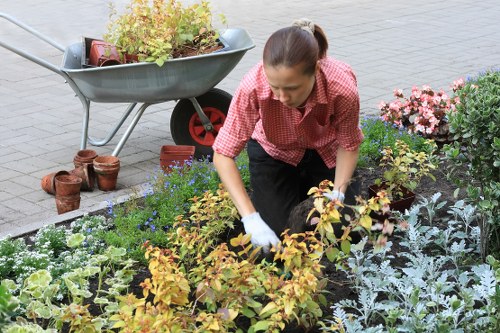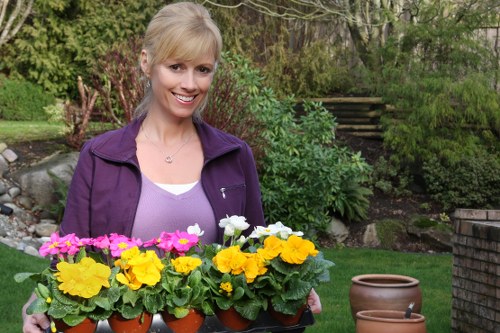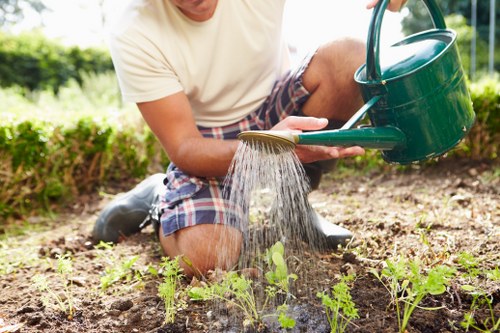Transform Your Outdoor Space: Mastering Landscaping for Gardeners

Landscaping is an essential aspect of gardening that transforms ordinary yards into breathtaking outdoor sanctuaries. For gardeners, understanding the principles of landscaping can elevate their gardening skills, creating harmonious and aesthetically pleasing environments. This comprehensive guide explores various landscaping techniques, tips, and ideas to help gardeners design and maintain beautiful landscapes.
Whether you’re a novice gardener or an experienced green thumb, effective landscaping can enhance the functionality and beauty of your garden. By integrating plants, structures, and other elements thoughtfully, you can create a space that reflects your personal style while promoting sustainability and biodiversity.
In this article, we will delve into the key components of landscaping, including plant selection, garden design principles, soil preparation, and maintenance strategies. Additionally, we'll explore how technology and modern trends are influencing contemporary landscaping practices.
The Fundamentals of Effective Landscaping

Understanding the fundamentals of landscaping is crucial for creating a garden that not only looks good but also thrives in its environment. These fundamentals serve as the building blocks for any successful landscaping project.
Plant Selection: Choosing the right plants is paramount. Consider factors such as climate, soil type, sun exposure, and water availability. Selecting native plants can enhance the garden’s resilience and reduce maintenance efforts.
Soil Preparation: Healthy soil is the foundation of a thriving garden. Conduct soil tests to determine pH levels and nutrient content. Amend the soil as necessary with compost, fertilizers, and other organic matter to create an optimal growing environment for your plants.
- Assess soil health regularly.
- Use organic mulches to retain moisture.
- Implement proper drainage systems.
Design Principles for Landscaping

Effective garden design balances aesthetics with functionality. Here are some key principles to consider:
Balance: Achieve visual equilibrium by distributing elements evenly throughout the garden. This can be symmetrical or asymmetrical, depending on your design preference.
Unity: Ensure all components of the garden work together harmoniously. This includes the selection of plants, hardscaping elements, and color schemes.
- Plan the layout with a clear focal point.
- Incorporate pathways and borders to define spaces.
- Use complementary colors to create a cohesive look.
Incorporating Hardscaping Elements

Hardscaping refers to the non-living elements of landscape design, such as pathways, walls, fences, and water features. These elements add structure and functionality to your garden.
Pathways: Creating well-defined paths can guide visitors through the garden and enhance its visual appeal. Materials like stone, gravel, and wood can be used to match the overall theme of the landscape.
Water Features: Incorporating water elements like ponds, fountains, or waterfalls adds a sense of tranquility and can attract wildlife. Proper placement and maintenance are essential to ensure these features complement the garden without overwhelming it.
- Choose durable materials for longevity.
- Design with both practicality and aesthetics in mind.
- Integrate lighting to highlight hardscape features at night.
Sustainable Landscaping Practices

With growing environmental concerns, sustainable landscaping practices have become increasingly important. Adopting eco-friendly methods not only benefits the planet but also creates a resilient and low-maintenance garden.
Water Conservation: Implementing efficient irrigation systems, such as drip irrigation, can significantly reduce water usage. Additionally, planting drought-resistant species minimizes the need for frequent watering.
Native Plant Integration: Native plants are adapted to the local climate and soil conditions, making them easier to maintain and more resistant to pests and diseases. They also support local wildlife, promoting biodiversity.
- Use mulch to retain soil moisture and suppress weeds.
- Compost organic waste to enrich the soil naturally.
- Incorporate rain gardens to manage stormwater runoff.
Advanced Landscaping Techniques
For gardeners looking to take their landscaping to the next level, several advanced techniques can be employed to create stunning and unique outdoor spaces.
Vertical Gardening: Maximizing space by growing plants vertically is an innovative way to add greenery without taking up much ground space. This is especially useful in small gardens or urban settings.
Edible Landscapes: Combining ornamental plants with edible ones can create a garden that is both beautiful and productive. Integrating herbs, vegetables, and fruit-bearing plants into your landscape design enhances functionality.
- Utilize trellises and wall-mounted planters for vertical growth.
- Design plant beds that serve multiple purposes.
- Experiment with container gardening to add versatility.
Technology in Modern Landscaping
Embracing technology can streamline landscaping processes and introduce innovative solutions for garden management.
Smart Irrigation Systems: Automated irrigation systems equipped with sensors can monitor soil moisture levels and adjust watering schedules accordingly, ensuring optimal plant health while conserving water.
Landscape Design Software: Utilizing software tools can help gardeners visualize their designs, experiment with different layouts, and make informed decisions before implementing changes in the physical space.
- Incorporate solar-powered lighting for energy efficiency.
- Use drones for monitoring large landscapes.
- Implement automated maintenance tools for ease of upkeep.
Seasonal Landscaping Tips
Maintaining a vibrant garden year-round requires adapting your landscaping strategies to the changing seasons.
Spring: Focus on planting new species, preparing beds, and pruning existing plants to encourage healthy growth.
Summer: Implement water conservation techniques, provide adequate shade for plants, and manage pests proactively to keep the garden thriving.
- Mulch to retain soil moisture.
- Regularly deadhead flowers to promote continuous blooming.
- Protect delicate plants from extreme heat.
Enhancing Garden Aesthetics
Beyond plants and structures, various elements can enhance the visual appeal of your garden.
Color Schemes: Selecting a cohesive color palette can create a harmonious and inviting atmosphere. Consider the seasonal blooms and how different hues complement each other.
Texture and Form: Incorporating plants with diverse textures and forms adds depth and interest to the landscape. Mix foliage types, plant heights, and growth habits to achieve a dynamic look.
- Use shrubs and trees to create layers.
- Incorporate flowering plants for vibrant splashes of color.
- Add ornamental grasses for movement and texture.
Maintenance Strategies for a Lush Garden
Regular maintenance is vital to ensure the longevity and health of your landscape. Implementing a structured maintenance routine can prevent issues and keep your garden looking its best.
Pruning and Trimming: Regularly prune plants to remove dead or diseased branches, shape the growth, and promote air circulation. This helps in maintaining plant health and aesthetics.
Weed Control: Keeping weeds at bay through manual removal, mulching, or using organic herbicides prevents competition for nutrients and water, ensuring your desired plants thrive.
- Create a maintenance schedule for routine tasks.
- Use appropriate tools for efficient upkeep.
- Monitor plant health regularly for early detection of issues.
Creating a Personal Retreat
Your garden can serve as a personal retreat, offering a space for relaxation and rejuvenation. Thoughtful landscaping can transform your outdoor area into a serene haven.
Seating Areas: Incorporate comfortable seating options, such as benches, swings, or outdoor furniture, to create inviting spots for relaxation and socializing.
Outdoor Structures: Adding pergolas, gazebos, or arbors can provide shade, define spaces, and add architectural interest to your garden.
- Choose furniture that complements the garden’s style.
- Incorporate elements like fire pits or outdoor kitchens for enhanced functionality.
- Use lighting to create ambiance during evening hours.
Integrating Wildlife-Friendly Features
Attracting wildlife to your garden not only supports local ecosystems but also adds another layer of beauty and interest to your landscape.
Wildlife Habitats: Creating habitats for birds, bees, and butterflies by incorporating nectar-rich plants, birdhouses, and water sources can enhance biodiversity.
Pest Management: Encouraging beneficial insects and natural predators helps in managing pest populations organically, reducing the need for chemical interventions.
- Plant a variety of flowers to attract pollinators.
- Provide shelter with shrubs and groundcovers.
- Avoid pesticide use to maintain a healthy ecosystem.
Conclusion and Call to Action
Landscaping is a powerful tool for gardeners to create stunning and sustainable outdoor spaces. By applying the principles and techniques discussed, you can design a garden that is both beautiful and functional, tailored to your specific needs and preferences.
Remember, successful landscaping requires thoughtful planning, ongoing maintenance, and a willingness to adapt to changing conditions. Embrace creativity and sustainability to transform your garden into a personal oasis.
Ready to elevate your garden? Contact us today to start your landscaping journey or book your service now and watch your outdoor space flourish.



